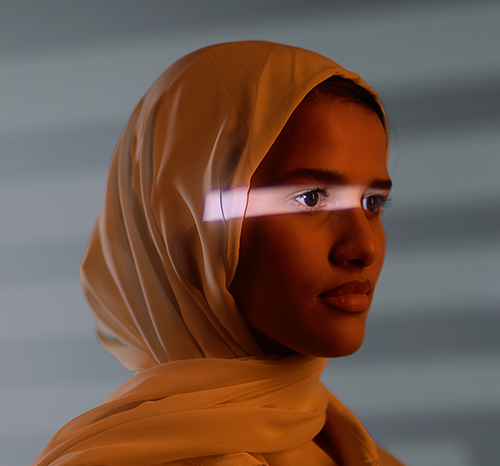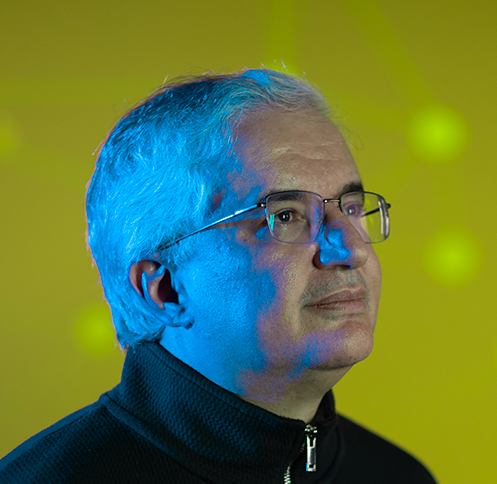AERON JONES
on a
mission
to print the future of electronics.
Aeron Jones
Ph.D. student, Electrical and Computer Engineering.
Computer, Electrical and Mathematical Sciences and Engineering
Imagine a world where tunable ink could turn anything into an antenna — cars, trees, even bandages. This is the vision of Aeron Jones, a Ph.D. student at King Abdullah University of Science and Technology (KAUST).
An electrical and computer engineering student, Jones is helping to develop a new kind of ink that can be tuned to control signals at different frequencies. Printed antennas already exist but mostly work in fixed configurations. Tunable ink that adapts to required signals offers greater flexibility, Jones says, and expands what printed electronics can achieve.
I hope this technology helps us transition toward a more sustainable technological future.”
Aeron Jones
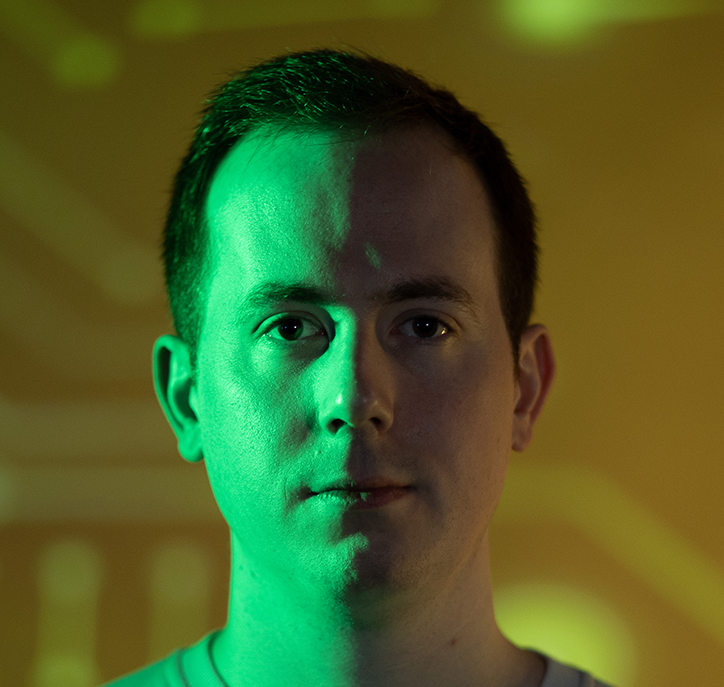
“We’re thinking of putting these antennas, think of them as smart surfaces, on the windows of buildings, cars, or even trees,” Jones says. “When electromagnetic waves hit the surface, they can be directed toward where they need to go.”
The potential applications are wide-ranging. In Saudi Arabia’s energy sector, for instance, printed sensors could provide low-cost, reliable monitoring of oil and gas pipelines. Jones and his colleagues have already tested designs that spiral around pipes, with antennas transmitting data remotely. Similar approaches could benefit everything from smart homes to hospital systems.
"Once I realized this technology could help people, I fell in love with it and kept going down this pathway,” he says.
WATCH VIDEO
Aeron Jones
Innovation in ink
The challenge in developing printed electronics, Jones says, is ensuring reliable performance, even when surfaces bend or stretch. His team’s solution combines engineering and fabrication, redesigning geometries so circuits remain stable under stress.
Inks are another hurdle. They behave differently on paper, plastic, or fabric, requiring careful reformulation so printed patterns remain stable. “A lot of my work is looking at what we can use that’s printable to steer these beams,” Jones says. “We’re investigating different materials, mixing them into an ink in order to print them on these surfaces.”
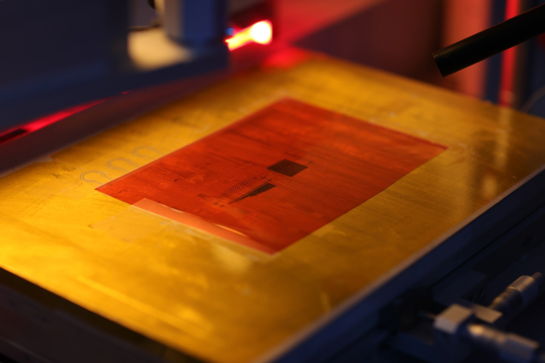
The payoff is a flexible design that can adapt to its environment, embedding electronics on T-shirts, bandages, windows, or plastics. Compared to traditional rigid circuit boards, these designs could reduce costs and improve efficiencies, laying the foundation for more sustainable communication networks.
“Rather than having many antennas sending energy everywhere and congesting the air, we can have more intelligent antennas that blend in with the environment and send signals directly to everybody’s phone.”
The efficiencies, Jones says, may also extend to manufacturing. Instead of producing antennas one at a time, roll-to-roll printing can generate millions rapidly, like newspapers streaming off a press. The result is wide coverage delivered quickly and at a fraction of traditional costs. Jones sees applications across sectors, from energy to health care.
One possibility that especially excites him is sensors printed on medical bandages. These, he says, could detect early infection, spotting changes invisible to the human eye and alerting doctors before problems worsen.
Finding global community
Behind the technical advances is Jones himself, whose path to KAUST has been shaped as much by community as by curiosity.
Before joining KAUST’s Integrated Microwaves Packaging Antennas and Circuits Technology Research Group, supervised by Professor Atif Shamim, Jones earned a master’s in electronic engineering from the United Kingdom’s Bangor University. Seeking Ph.D. opportunities abroad, he soon found Shamim, a leading figure in antenna research, along with a scientific community where impactful discoveries are built into the institution’s DNA.
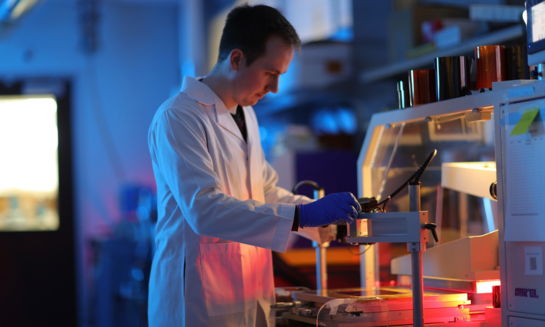
With Shamim’s leadership and the printed materials expertise of KAUST research scientist Dr. Mohammad Vaseem, Jones has found the support he needs to advance his research.
However, what initially struck him about KAUST was the diversity of perspectives and the sense of trust on campus. One small example came when he misplaced his smartphone in a public space and returned hours later to find it untouched. “It’s really nice to see,” he says. “Everybody lives in this small community in harmony. It’s really beautiful.”
For Jones, KAUST is an environment anchored in honesty, safety, and cooperation, a place where he feels free to pursue innovations in tunable inks, antennas, and sensors. “I like to think whatever I’m doing will benefit humanity and the world,” he adds. “I hope this technology helps us transition toward a more sustainable technological future. I’m on a mission to connect the world quickly.”
Learn more about KAUST and our mission-driven research
KAUST shall be a beacon for peace, hope and reconciliation, and shall serve the people of the Kingdom and the world.
King Abdullah bin Abdulaziz Al Saud, 1924 – 2015
Email: global.pr@kaust.edu.sa
Mailing address:
4700 King Abdullah University of Science and Technology
Thuwal 23955-6900
Kingdom of Saudi Arabia
FOLLOW US
© 2025 King Abdullah University of Science and Technology. All rights reserved.


